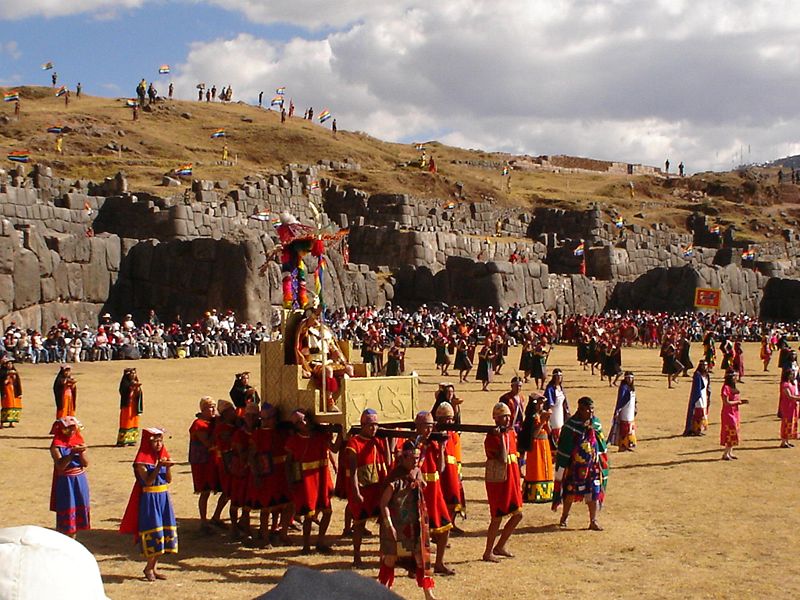 In the southern hemisphere, the winter solstice is fast approaching. In Cusco, Peru, this event is celebrated with a traditional festival called Inti Raymi (Quechua for Sun Festival). The purpose of the Inti Raymi is to bring the sun back after the longest night of the year and begin the Incan New Year. In order to accomplish this, it is necessary to perform many rituals, sacrifices, and prayers to the Sun God.
In the southern hemisphere, the winter solstice is fast approaching. In Cusco, Peru, this event is celebrated with a traditional festival called Inti Raymi (Quechua for Sun Festival). The purpose of the Inti Raymi is to bring the sun back after the longest night of the year and begin the Incan New Year. In order to accomplish this, it is necessary to perform many rituals, sacrifices, and prayers to the Sun God.
In Incan times, the Inti Raymi was a huge celebration, lasting nine days and involving the emperor, the nobility, and the army. The Inti Raymi always took place in Cusco. In order to participate, the people had to fast for three days, consuming only white maize and chucam herb. The most important day of the festival was June 24th. On that day, the emperor drank a special maize drink and the priest lit a flame inside the Temple of the Sun, while the rest of the people played music and danced in costume. Human sacrifices were probably made, and llama entrails were used to predict the future. When the emperor returned to his palace at the end of the festival, women followed him tossing red flowers and colorful feathers.
When the Spanish colonized Peru, they banned the Inti Raymi because it was a pagan festival and detracted from their efforts to smother Incan culture and convert everyone to Catholicism. Over time, the winter solstice festival merged with the Saint Day of John the Baptist, which falls on June 21. The Inti Raymi was not revived until 1944, when the American Institute of Art in Cusco organized a historical reenactment of the festival.
Today, visitors to Cusco can witness this historical reenactment each year on June 24th, beginning with a morning mass and the raising of the rainbow Inti Raymi flag in the main plaza. Next, actors perform a scene representing the emperor thanking the Sun for his blessings in Quechua. Afterwards, the emperor is carried on a litter to the Fortress of Sacsayhuaman, where he reenacts Incan rituals and sacrifices.
If you’re lucky enough to be studying Spanish in Cusco during the Inti Raymi, you will have a fascinating opportunity to see local history come to life and learn about the Incan culture.